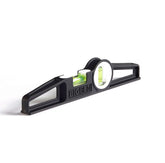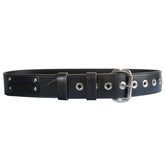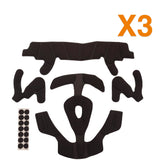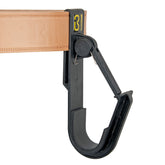As a professional tradesperson, you’re acutely aware of the risks you are exposed to on-site.
From adverse weather and poor lighting to dropped tools and falls from height, you know if you’re not kitted out in some top quality Personal Protective Equipment (PPE), there’s a serious risk of potential injury.
What is PPE?
PPE is designed to protect employees from significant workplace injuries and illnesses. It’s often the last line of defence against injury, so it’s crucial that employees and workers utilise the right equipment when it’s required.
According to the Personal Protective Equipment at Work Regulations 1992 (PPER), PPE is defined as ‘all equipment (including clothing affording protection against the weather) which is intended to be worn or held by a person at work and which protects the user against one or more risks to their health and safety’[1]. Think safety helmets, gloves, eyewear, and hi-vis clothing. These are the PPE essentials you need to arm yourself with to conduct your work in the safest manner possible.
PPE in numbers
The problem is, PPE often isn’t utilised in the right way. Sometimes, not even at all. In fact, the stats regarding the use of PPE on-site are actually quite staggering.
The SHP Online reported that 98% of employees said they have seen others not wearing PPE when they should have been. From time to time, these could’ve been one-off accidental incidences. However, 30% also said this happens repeatedly[2].
The top four reasons offered for not wearing the appropriate PPE were:
- Unattractive looks or design
- Too hot to wear
- Doesn’t fit properly
- Not easily accessible (not supplied by employer)
There are a couple of interesting lessons we can learn from this data. Firstly, as an industry, it’s clear we need to make PPE more accessible to all workers.
Secondly, we need to ensure that workers feel comfortable wearing such equipment. Whether that means style, fit or comfort, we must develop PPE that workers want to wear and that doesn’t detract from their ability to conduct their day-to-day operations. If you’re not comfortable wearing PPE, you’re less likely to wear it. That means you’ll be more at risk of serious injury.
What is the hierarchy of controls and where does PPE sit within this framework?
As we’ve outlined, PPE is incredibly important and widely used on-site across the world, but the hierarchy of controls states that PPE should be regarded as a last resort to protect against risks to health and safety. If at all possible, engineering controls and safe systems of work should be the first port of call.
The Health & Safety Executive (HSE) advise considering controls in the following order:
- Elimination – physically removing a hazard
- Substitution – replacing a hazard
- Engineering controls – isolating people from the hazard or ensuring lack of access
- Administrative controls – implementing changes to the way people work
- PPE – if the hazard remains, offer protection to workers via PPE
What are the Personal Protective Equipment Regulations 1992 and why are they so important?
The PPER 1992 states “every employer shall ensure that suitable personal protective equipment is provided to their employees who may be exposed to a risk to their health or safety while at work except where and to the extent that such a risk has been adequately controlled by other means which are equally or more effective.”
This highlights that it is the employers responsibility to provide PPE to protect their staff against risk. However, on 6th April 2022, the rules are being updated and the Personal Protective Equipment at Work (Amendment) Regulations 2022 will come into force.
What are the PPE regulations 2022 updates?
The 2022 update to PPER effectively extends employers duties regarding the deployment of PPE, from ‘employees’ to ‘workers’. Now, the regulations include both employees (Limb a workers) and those with a more casual employee relationship or who work under contract (Limb b workers). Employees’ duties have also been extended to workers.
It’s worth noting that the changes do not apply to those with a ‘self-employed’ status.
What does this change mean for employers?
The PPE regulation changes mean that, following a risk assessment by an employer, if it has been determined that PPE is required they must ensure suitable PPE is provided to workers and that there is no difference between the way that it is provided to Limb a (employees) and Limb b workers (those with a more casual employee relationship or contract).
The new 2022 PPE regulations update also amends the 1992 Regulations to extend the duty on the employer to deliver PPE free of charge to limb a and limb b workers.
The regulations state that employers must offer PPE that is:
- Suitable if health and safety concerns cannot be controlled by other means within the hierarchy of control
- Compatible if two or more items of PPE are required to be worn together, such as safety helmets and ear defenders
- Maintained, cleaned or replaced as and when needed
- Safely and correctly stored if not in use
- Provided with information, instruction and training to those required to wear it
Furthermore, when PPE is provided to workers, it’s imperative they:
- Ensure the PPE is used in accordance with the training and instructions they are given
- Take reasonable steps to ensure the PPE is returned to the storage/accommodation provided after use
- Report the loss or defect of PPE
What does the update mean for limb (b) workers?
If the aforementioned risk assessment recommends that a limb (b) worker requires PPE to conduct their work safely, it is the employer’s responsibility to carry out a PPE suitability assessment and ensure PPE is offered free of charge in the exact same manner as they would do so for employees.
This means that from April 6th, employers will also be responsible for the maintenance, storage and replacement of any PPE provided to limb b workers.
As a worker, it is still your responsibility to use any PPE you have been provided properly, in adherence with the training and instruction from your employer. If the PPE you provide is lost or becomes defective, this must be reported.
What types of PPE does this regulation cover?
This new update to the PPE regulations covers all PPE. There is a vast amount of PPE out there designed to keep you safe while at work. Those that design and manufacture PPE are also putting increased efforts into ensuring that modern PPE provides a comfortable fit and doesn’t detract from the wearer’s ability to conduct their work, while ensuring safety standards aren’t compromised.
Some of the common types of PPE you’ll be used to seeing include (but are not limited to):
Height safety PPE
Tragically, falls from height are one of the leading causes of injuries and deaths on-site. If you’re working on a project the requires working at height, height safety PPE, including fall protection equipment, is an important requirement to help you conduct work with ease, while simultaneously preventing serious injuries of fatalities.
We go into further depth regarding the risks at height in the blog: Falls from Height Rise in 2021 – Fall Protection Equipment Saves Lives

Head protection
A top-quality safety helmet is a must when working on-site. It protects your head when conducting work such as lifting and lowering heavy goods, or when working at height in order to reduce the impact of a fall or dropped tools.
We recommend the BIGBEN Ultralite Height Safety Helmet. It takes safety and comfort to a new level with a soft breathable liner that conforms to the shape of the head. It’s ultra-lightweight too, meaning workers won’t be put off wearing it.
Don’t let its comfort fool you, as safety hasn’t been compromised. The BIGBEN Ultralite Height Hat conforms to the EN12492 Standard and EN397 Industrial Standard for shock absorption and penetration.

Eye protection
Unfortunately, a lack of adequate protective eyewear could cause significant, long-term damage. It’s important to wear the correct safety glasses to keep your eyes healthy.
PPE for your eyes should be used if you’re at risk of impact, cuts, misting or spraying of the eyes. Cleaning your protective eyewear is critically important too, as dirt on your lenses could inhibit your vision, adding to the risk of accidents.
We recommend the Lucerne Anti-Scratch Safety Eyewear, unique and stylish glasses with a flexible one-piece lens and suspended side-arms. These are Mechanical Strength F safety specs, delivering low energy impact protection from high-speed particles.

Hearing protection
It’s important that assessments are carried out under the ‘Control of Noise at Work Regulations 2005’ in order to conclude whether or not ear protection is required.
If it’s decided that hearing protection is needed, employers must choose protection that is suitable for the hazards outlined within the specific environment. Employers must also ensure that the hearing protection can work in tandem with additional PPE such as hard hats or dust masks, and one won’t inhibit the others capability to keep you safe.
Depending on the scenario, of course, we often recommend the Helmet Mounted Ear Defenders. These quality ear defenders deliver 26 SND (db) of hearing protection, and also fit onto a wide range of helmets including the BIGBEN Ultralite, MSA V-Gard, JSP, Centurion and Petzl helmets.

Hand safety
When working on-site, you usually have to handle a lot of equipment and materials day to day. Your hands are often your most used tools. A pair of safety gloves will deliver essential protection when handling equipment and tools.
Choosing the right pair of gloves can be tricky, with lots on the market to choose from. You need safety and comfort in equal measure to be able to achieve your goals effectively without putting yourself at risk.
There are various other considerations too including the time of year, and whether or not you require puncture and abrasive resistance, or even chemical resistance.
Our favourite all rounder is the BIGBEN Black Foam Nitrile Ultralite Gloves. These safety gloves have excellent grip, ideal for scaffolding and construction. They are also very comfortable, ultra-lightweight and perfect for use in wet and dry conditions. If you’re stuck for choice, this could be the best bet.

Foot safety
There are many hazards that put your feet at risk, from untidy workspaces and poor weather to slips, trips and falls. A good pair of safety footwear will deliver the appropriate protection against all sorts of hazards. But as we know, comfort is key to productivity and this should be front of mind when selecting a pair of safety boots.
We recommend the all-new V12 Lynx IGS Waterproof and Breathable Safety Boots. Foot fatigue is a common problem on-site. The V12 Lynx IGS Safety Boots feature a lightweight composite midsole and toecap, meaning they’re incredibly light and comfortable. You’ll feel better on your feet for longer.

Body protection
Although the Personal Protective Equipment at Work Regulations’ definition of PPE excludes ordinary work clothes that have no safety benefits for the wearer, body protection may be required for extended periods when working outdoors to protect against, for example, poor weather or lighting, or to minimise the impacts of extremely hot or cold temperatures. Types of body protection include thermal comfort, buoyancy, hygiene control, restriction of movement and wet or dry conditions.
While there are many types of PPE that can deliver body protection, one stand-out for us is the BIGBEN Hi-Vis Waterproof Jacket. It’s guaranteed to keep you warm and dry during the winter, and also features top end hi-vis to help you stand out and prevent impacts from moving vehicles or machinery on-site.

Stay safe with PPE from Leach’s
Our tradespersons face risk working on-site every day. To combat this, we must provide comfortable and safe PPE to encourage use and reduce the likelihood of injuries.
Businesses that arm themselves with up-to-date safety knowledge, and who choose the most appropriate PPE, will be successful in reducing to risk of injuries to workers. Explore Leach’s range of PPE now, or contact our sales team on 01432 346890 for further guidance.
[1]https://www.hse.gov.uk/ppe/ppe-regulations-2022.htm
[2]https://www.shponline.co.uk/ppe-personal-protective-equipment/?cid=nav


















